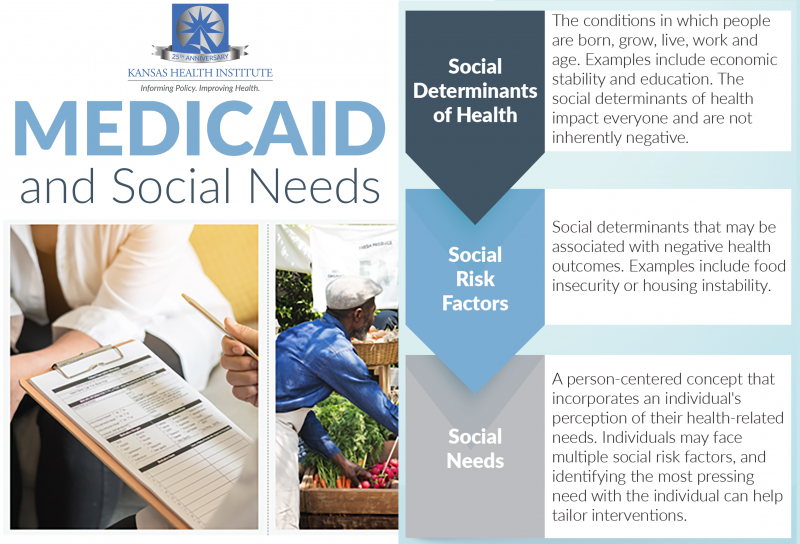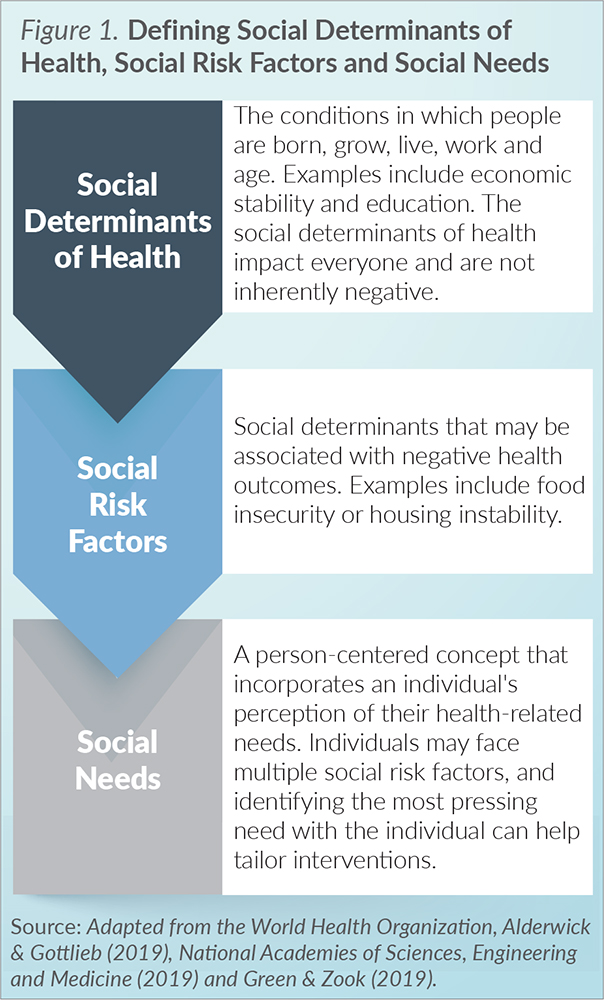Outcomes
Emerging evidence, while limited, suggests positive outcomes are achieved from interventions that address social needs. These outcomes include reductions in health care utilization and expenditures, particularly for emergency department visits and inpatient admissions. Studies also have found increases in patient satisfaction with care, potentially due to additional needs being met. One study documented improvements in the number of patients receiving optimal care for chronic conditions.
While a few studies have documented the impact of Medicaid-based social needs interventions, robust outcomes data are not yet available. As more interventions are implemented, evaluating these efforts will be critical to understanding their impact.
Challenges
Efforts by Medicaid programs to address social needs have experienced challenges that might need to be addressed if these efforts are to continue.
Funding: Medicaid MCO leaders across the U.S. have cited concerns about setting appropriate payment levels for non-medical services and about the challenges associated with transitioning to value-based payment models. Additionally, MCO leaders have indicated that expanding Medicaid might provide more funding to implement innovative interventions. Leaders of Medicaid programs, such as state Medicaid directors or plan officials, could have concerns about having adequate funds to ensure that benefits meet “state wideness” and “comparability” requirements if added via the state plan.
Infrastructure: Other concerns center around a lack of infrastructure. This includes a lack of capacity and expertise on the part of some medical providers to identify and address social needs and an inability to share data with partners, such as community-based organizations. Sufficient capacity to provide services in the community (e.g., via food banks) is a concern, as is a lack of timely data about social needs.
Culture change: Addressing social needs will require cultural changes within state Medicaid programs, MCOs and providers in order to break down silos that exist in the health care and social services sectors. Efforts by state Medicaid programs and others in the health care sector to address social needs raise a larger question: Is it the responsibility of the health care sector to tackle social needs, or should these needs be addressed by other sectors or through collaborative efforts?
Conclusion
State Medicaid programs are using a variety of mechanisms to implement an increasing number of interventions to address social needs. While approaches vary, most states are addressing more than one need. This is important, given that enrollees often have more than one issue impacting their lives, and it highlights the need for enrollees to participate in the prioritization of interventions. As more states implement interventions to address social needs, additional examples will emerge, as will a better understanding of the impacts of these initiatives.
Access additional publication in the Documents & Downloads section.






